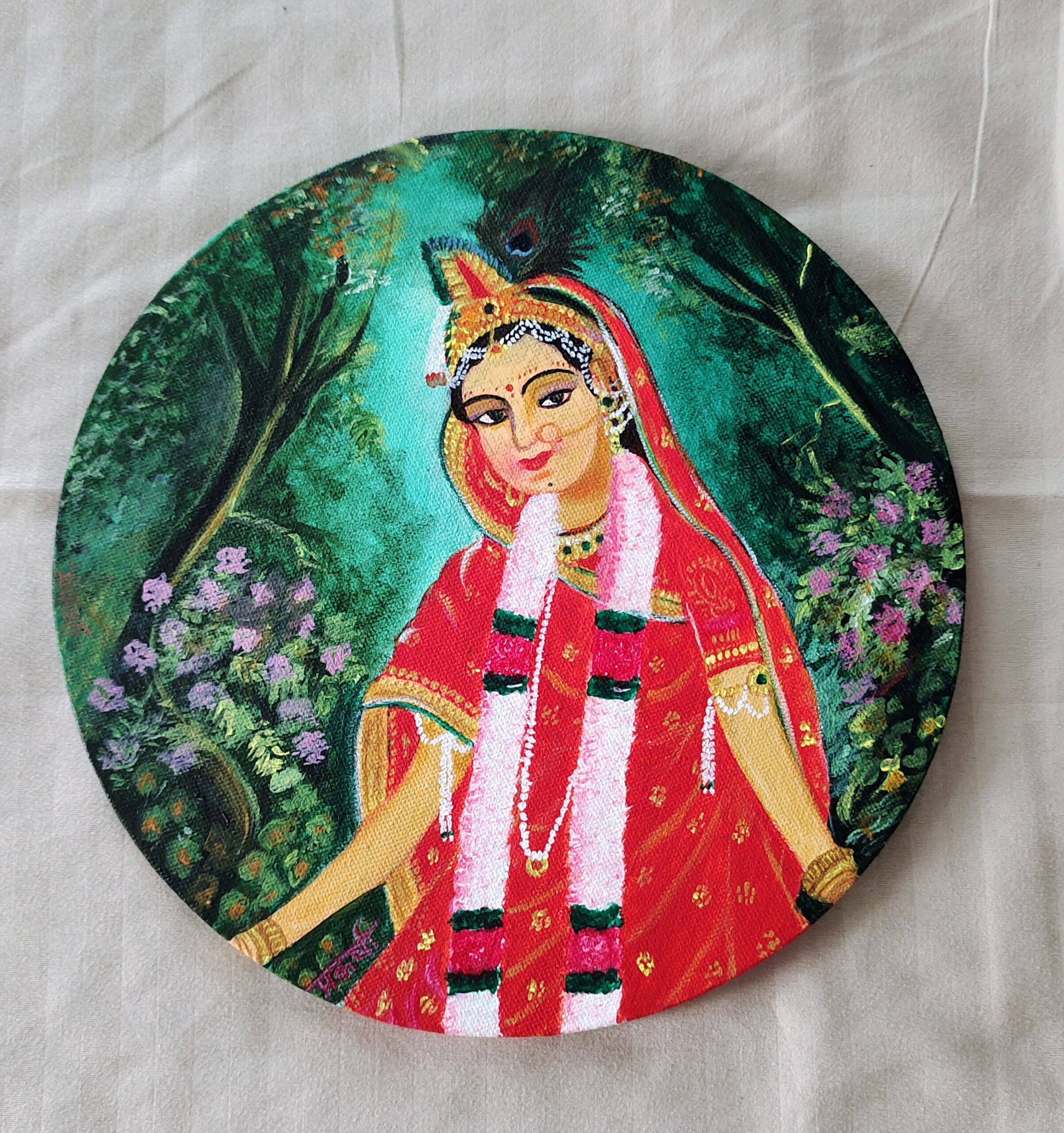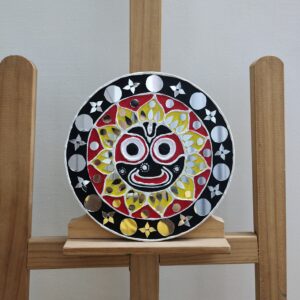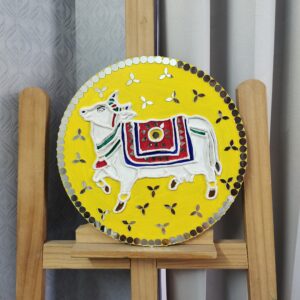Radha Rani Acrylic Painting
The Hindu mythology and devotional literature lay great emphasis on Radha, also known as Radha Rani, especially in reference to her relationship with Lord Krishna. Love, dedication, and the ethereal facets of Hinduism are all intricately woven within her story.
Myth and mythology surround Radha’s birth and early years, with conflicting narratives providing different insights. She is portrayed in most stories as Lord Krishna’s adored consort, renowned for her unwavering love and devotion to him. Many people believe that Radha is the epitome of unadulterated, selfless bhakti—devotion to the almighty.
Hinduism honors the love between Radha and Krishna in a number of texts, poems, and artistic creations, most notably in the Bhagavata Purana and other Bhakti movement compositions. Their bond is regarded as the embodiment of divine love and serves as a metaphor for the union of the individual soul (jivatma) with the Supreme Soul (Paramatma).
The way that various traditions and writings depict Radha differs. She is described as either Krishna’s eternal consort or his spiritual opposite in some traditions, or as his childhood companion and playmate in Vrindavan in others. Throughout the story, Radha is always portrayed as Krishna’s greatest follower, whose love and devotion are greater than anything material.
Since she is the embodiment of good fortune and heavenly grace, her name, Radha, is frequently understood to imply “prosperity” or “success.” She is respected for her knowledge of the mysteries of heavenly love as well as her profound love for Krishna.
Radha’s devotion to Krishna is frequently represented by a variety of metaphorical interpretations. It is believed that her desire for unification with Krishna represents the soul’s desire for enlightenment and oneness with the divine. Radha is the devotee’s unwavering pursuit of the divine, surpassing the bounds of physical life, and their love is depicted as a dance of celestial pleasure.
For ages, innumerable poets, painters, and philosophers have drawn inspiration from the tales of Radha and Krishna’s love. Every year, on festivals like Holi and Janmashtami, devotees celebrate their love by acting out their divine drama via acting, dancing, and music.
Radha is portrayed in devotional literature as having unparalleled elegance, beauty, and charm, captivating Krishna and enthralling everyone who hears about her. She is a role model for devotees hoping to strengthen their spiritual ties to the holy because of her humility, compassion, and persistent devotion.
Beyond religious bounds, Radha’s influence can be seen in India and other countries in a variety of artistic and cultural expressions. Her tale speaks to people of all ages who are looking for spiritual fulfillment and heavenly love, regardless of location or time.
In conclusion, in Hindu mythology and spiritual tradition, Radha Rani represents divine love and devotion. Her bond with Lord Krishna represents the pinnacle of bhakti, the state in which love purges one’s attachments to the material world and guides one toward a spiritual unity with the divine. Devotees’ hearts and minds are still enriched and inspired by Radha’s story, which affirms the enduring value of love, devotion, and the pursuit of spiritual truth.
The main subject of an acrylic painting of Radha Rani is usually Radha, a prominent heroine in Hindu mythology who is renowned for her love and devotion to Lord Krishna. Her strong emotional bond with Krishna is reflected in the many moods and places in which artists frequently depict her. The richness and depth of her persona are captured with acrylic paints, which are renowned for their brilliant hues and adaptability. Her portraits are sometimes placed against pastoral or celestial landscapes to reflect the romantic and spiritual nature of her relationship with Krishna. Each artist adds their own style and interpretation to the image of Radha Rani in these paintings, which might range from traditional to contemporary interpretations.







Reviews
There are no reviews yet.